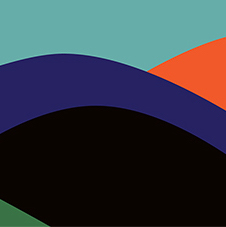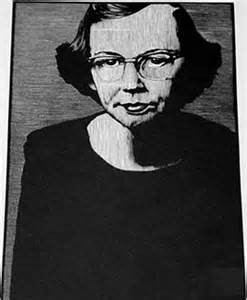Whenever she looked at Joy this way, she could not help but feel
that it would have been better if the child had not taken the Ph.D.
And so, it is not only the leg, taken
this second time, she laments, but the eye, the one
she imagines in the valise in the hollowed-out
Bible, socketless eye for the eye lost
as the leg as it had been hers, a dimly remembered
girl’s. The doesn’t need to look down, through
the nothing in which she has professed to believe,
but she does, of course, willing the body again
toward it, invisibility, pure space.
The blind brain arguing the mind even now,
the missing arch tingles as though waking
from sleep as the calf muscle tenses,
quick, rebellious, from climbing
the ladder to this: phantasm-what-is.
In an act of bold imagining, the late Claudia Emerson uses the predicament of Joy (Hulga) Hopewell at the end of “Good Country People” to initiate a radical act of empathy, while engaging in mind/brain and other mind/body speculations which would likely have attracted — and in this personal mode perhaps confounded — the one-legged philosopher who would gladly teach but learns even more as she is duped and robbed by the devilish Bible salesman Manley Pointer, ostensibly a “Chrustian” from Willohobie.
Using a loose sonnet frame, Emerson manages to convey a narrative moment while detailing the sensory experiences and mysteries Hulga/Joy confronts alone in the loft. It is Stevens’s “the nothing that is” there which dominates the poem, along with Joy’s sense of emptiness once her illusions have been swept away. Though it is another woman’s eye Pointer has claimed to filch, he has taken Hulga’s glasses, leaving her not only immobilized with blurred vision, but unable to see the old “truths” of her highly-educated inner space, upon which she has leaned for so many years. The hard truth, dream which is fact, which she sees at the end of the poem may be the abyss, but what Emerson creates is an intricate mystery of detail, syntax and conundrum, which encourages the reader not to stop at watching Hulga, but to see through her eyes and mind and to share the alarming discovery that she is not the sole engineer of her identity.
* “Joy in the Loft” originally appeared in Shenandoah Vol. 60, Nos. 1-2. The late Claudia Emerson’s most recent collection of poems is The Opposite House. In the fall LSU will bring out another collection, Impossible Bottle. * Barry Moser is currently the Irwin and Pauline Alper Glass Professor of Art and the Printer to the College at Smith College. His memoir We Were Brothers will be reviewed in Shenandoah this summer. * Flannery O’Connor’s The Complete Stories, in which “Good Country People” can be found, received the National Book Award in Fiction in 1972.


